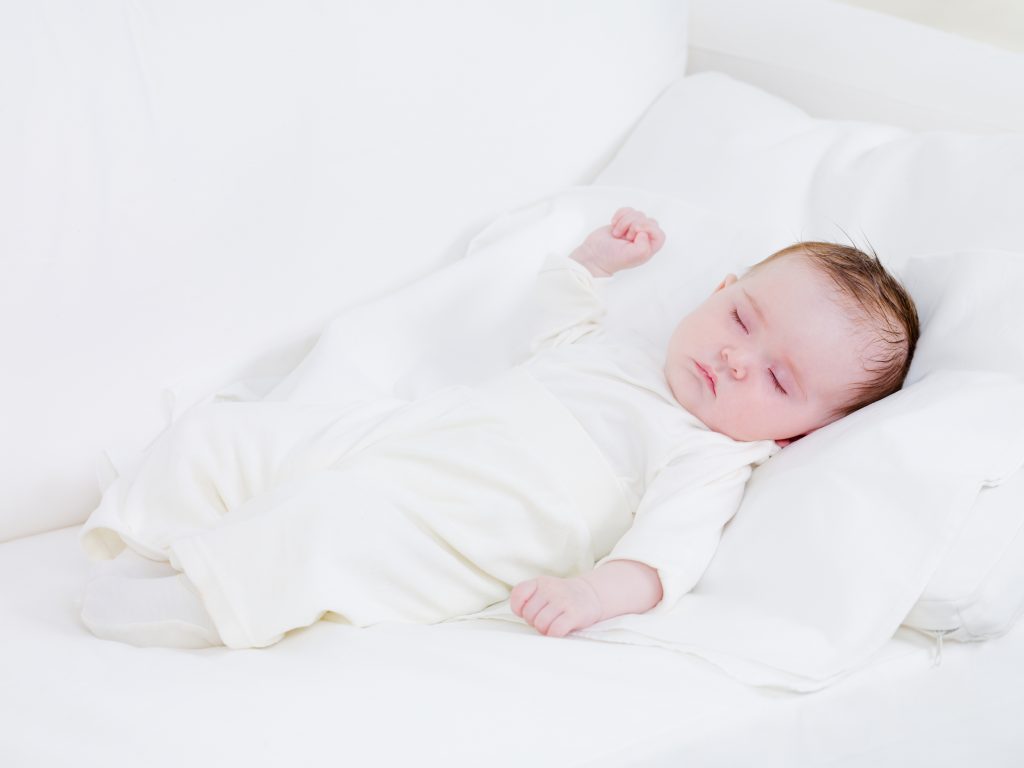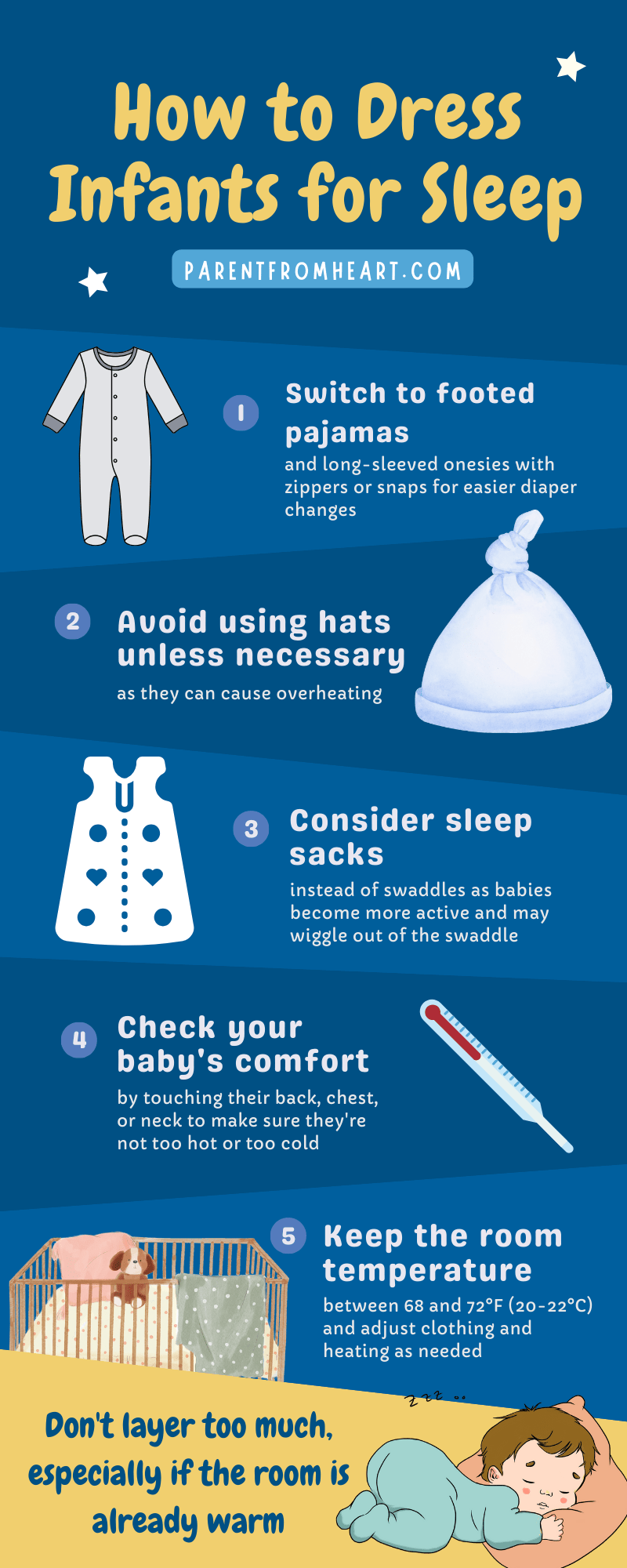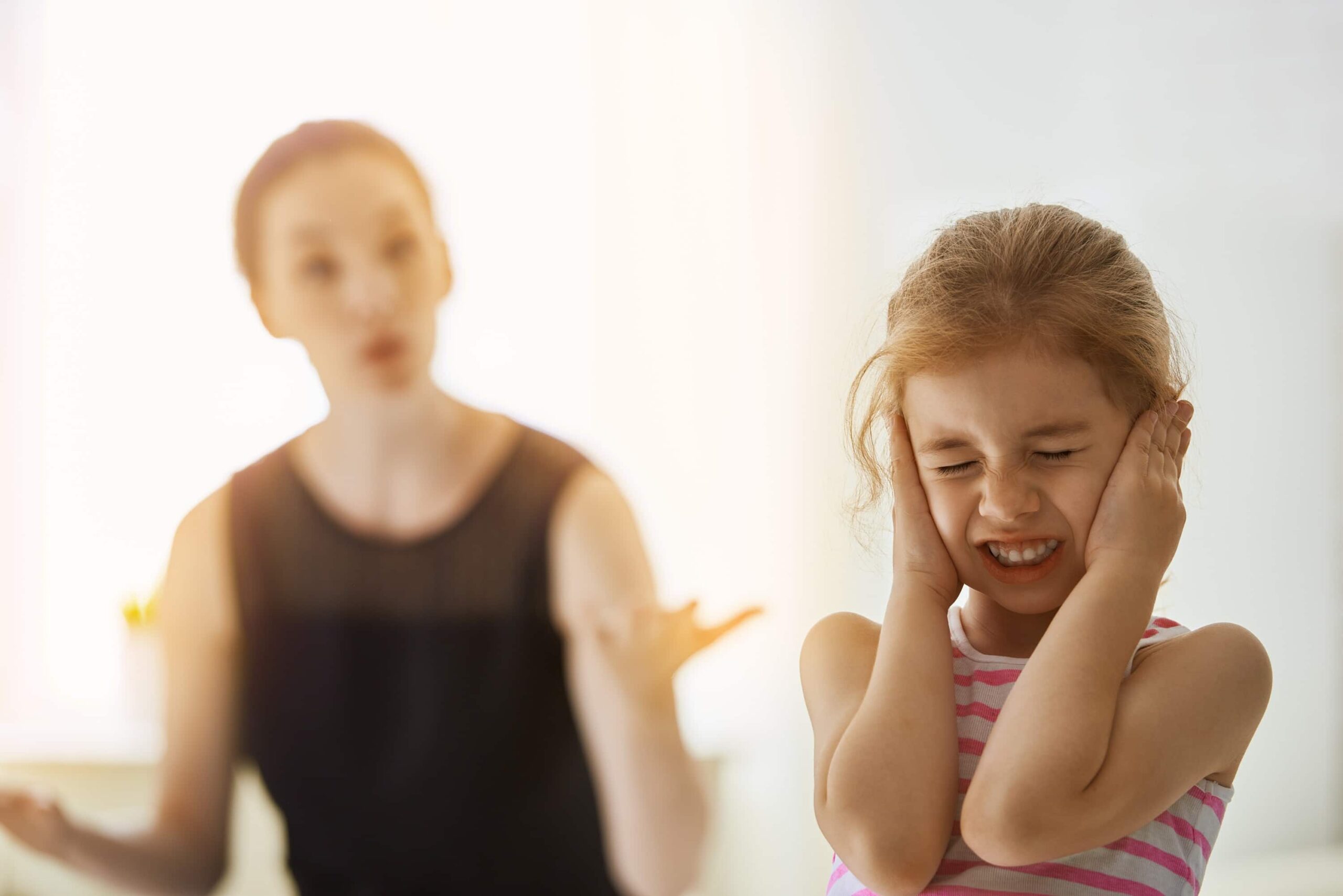“How to dress baby for sleep?” Oh, the anxiety that gripped me as a first-time mom! Figuring out how to dress baby for sleep was quite the mission. And undoubtedly, it’s a universal concern.
Whether you’re from the USA, Japan, or Slovakia, the question remains unchanged for parents worldwide. And for first-time moms and dads, it’s a triple dose of uncertainty and curiosity.
I know the crippling struggle. So, to help with the stress, I’ve put together a guide on how to dress baby for sleep by age. Pin it, save it, or share it with a friend!

How to Dress Baby: General Tips and Guidelines
Before diving into the specifics, let’s go over some general tips and guidelines on how to dress a baby for sleep. These suggestions are universal and apply to all ages. They are also not location-specific, so you don’t have to worry about where you live.
Look at the room temperature
First things first, consider your baby’s sleeping environment. Is the room too hot or too cold? Experts say the ideal room temperature for a sleeping baby is between 68 and 72°F (20 to 22°C).1 However, this isn’t a hard-and-fast rule.
This is because you should consider where you are. Babies living in hotter climates may need less clothing to sleep. In contrast, babies living in colder regions may require more layers.
Moreover, newborns and infants can’t regulate their body temperature as well as adults. So, pay attention to your baby’s cues—if they’re sweating or shivering, adjust their clothing accordingly. Avoid too much air conditioning and heating, too.
Babies lose heat four times as fast as adults. Moreover, a one-degree decline from their standard skin temperature of 97.7°F (36.5°C) can cause their oxygen consumption to increase by 10%.2
Choose safe and comfortable fabrics
You shouldn’t disregard fabrics when dressing your baby for sleep. Since the clothes are closest to your little bub’s skin, choose breathable and natural textiles. These include bamboo, cotton, or linen. Likewise, steer away from polyester or nylon.
In addition, avoid constricting clothing. You want movement for your munchkin, not a tight, immobile fit. Potential choking hazards like buttons, zippers, or ribbons are also a no-no. Instead, opt for loose-fitting, soft sleepwear that’s easy to put on and take off.

Don’t overdress your baby
Parents, don’t overdo it. If you’re in a tank top and shorts, don’t bundle up your little one like an Eskimo. Conversely, if it’s winter and you need a sweater, your baby may need two or three more layers. Sleepsacks are also a great alternative to blankets, which pose suffocating risks.
Again, consider where you live to determine what’s best. If you must layer them in more than one piece of clothing, consider not covering their heads, hands, and feet. These areas are essential for releasing body heat, regulating temperature, and preventing overheating.
How to Dress Newborn For Sleep (0 to 3 Months)
Depending on where you live and the season, there are many ways to dress a newborn. However, remember that they can’t regulate their temperature until six months old. As such, consider the following tips in addition to the tips above:3
- Start with a good base layer, such as a onesie or footed pajamas
- Add a sleep sack or swaddle blanket for warmth if room temperature is below 68°F (20°C)
- Monitor your little one’s comfort by feeling their back, chest, or neck to ensure they’re not sweaty or cold
- Don’t dress them in one or two layers than what the adults wear in the same area
- Don’t dress newborns more than three to five days old with a hat
- Try to regulate room temperature when it reaches or exceeds 75°F (23.9°C)

When Can Babies Sleep With A Blanket?
According to the American Academy of Pediatrics, babies under 12 months old shouldn’t sleep with a blanket.4 This is because they’re linked to about 3,400 sudden unexpected infant deaths (SUID) in the U.S. due to accidental suffocation.5 Aside from blankets, other causes of the latter include stuffed toys, pillows, and loose bedding.
How to Dress Newborn in Winter
Winters can get chilly, especially at night. Therefore, the following can help keep your baby warm and cozy:
- Use thicker fabrics, such as fleece or wool
- Dress them in long-sleeved onesies or footed pajamas
- Add layers like socks, booties, and mittens for extra warmth
- Use a sleep sack or swaddle blanket to wrap them up while they sleep
- Monitor your little one’s comfort by feeling their back, chest, or neck to ensure they’re not sweaty or cold
- Ensure the room temperature is between 68 and 72°F (20-22°C) and adjust layers and heating accordingly
- Avoid dressing them in three or more layers
How to Dress Infants for Sleep (3 to 6 Months)
Bedtime styling during infancy is also critical. Thankfully, you don’t have major changes to make. They’re similar to the above tips for newborns, so revert to them if you need a refresher. However, keep these changes in mind:
- Switch to footed pajamas and long-sleeved onesies with zippers or snaps for easier diaper changes
- Avoid using hats unless necessary, as they can cause overheating
- Consider sleep sacks instead of swaddles as babies become more active and may wiggle out of the swaddle
- Check your baby’s comfort by touching their back, chest, or neck to make sure they’re not too hot or too cold
- Keep the room temperature between 68 and 72°F (20-22°C) and adjust clothing and heating as needed
- Don’t layer too much, especially if the room is already warm

How to Dress Babies For Sleep (6 to 12 Months)
I was ecstatic when my children turned one. They were more grown, and it felt like a big milestone. But with this came the need for some wardrobe changes at bedtime. Here are some adjustments you can expect at this stage:
- Opt for warmer pajamas, such as fleece or heavier cotton blends, as they become more active and generate more body heat
- Gradually introduce blankets and wean off sleep sacks
- Introduce two-piece pajamas or separate tops and bottoms for more flexibility in adjusting layers
- Check your baby’s comfort by touching their back, chest, or neck to make sure they’re not too hot or too cold
- Maintain the room temperature between 68 and 72°F (20-22°C) and adjust clothing and heating as needed
- Don’t layer too much, especially if the room is already warm

How to Dress Toddlers For Sleep (12 to 24 Months)
By this time, sleepwear attire becomes more similar to that of adults. Your toddler may be walking, talking, and becoming more independent. In most cases, they may even have preferences on what they want to wear to bed.
I recall how my little boys’ wardrobe was a treasure trove of cute pajamas at this stage. It definitely made bedtime routines more fun. So, for this milestone, here are some things to remember:
- Consider introducing a toddler pillow and soft bedding if you’re not already using them
- Let them choose what they want to wear, but always ensure they’re dressed appropriately for the room temperature
- Consider dressing them in two-piece pajamas with elastic waistbands for easier bathroom trips
- Slowly introduce using thin, short blankets when they turn a year old

Additional Safety Tips for Dressing Babies and Toddlers for Sleep
In addition to sleepwear styling, be mindful of the following when putting your little one to sleep:
- Place them on a firm and flat surface, especially when they can already roll on their tummy
- Don’t place stuffed toys, loose bedding, pillows, and blankets in their crib until they’re at least a year old
- Put them on their backs, not their tummy or side, when putting them to sleep
- Keep cords, strings, and other potentially hazardous objects out of reach of your little one’s sleeping area
- Share a room (not a bed) for the first few months per the American Academy of Pediatrics recommendation
- Don’t use scented detergents to wash baby clothes
- Consider using a fan for hot room temperature
Talk to your pediatrician for the best recommendation and advice for other sleeping-related concerns. Likewise, adjust as you go along. Your munchkin’s needs and milestones will constantly change, so make sure their sleepwear and sleeping environment change, too.
Wrapping up
How to dress baby for sleep is crucial, especially in the first few months of life. Follow the tips above for safety and comfort. Sweet dreams to your little one, and happy parenting!
What other tips do you have for dressing babies and toddlers for sleep? Share your thoughts below!
- Tsogt et al. “Thermoregulatory effects of swaddling in Mongolia: a randomised controlled study.” Archives of Disease in Childhood, 2016. ↩︎
- “Keeping Your Baby Warm.” University of Rochester Medical Center. ↩︎
- Moon et al. “Sleep-Related Infant Deaths: Updated 2022 Recommendations for Reducing Infant Deaths in the Sleep Environment.” American Academy of Pediatrics, 2022.
↩︎ - Moon, R. “How to Keep Your Sleeping Baby Safe: AAP Policy Explained.” Healthy Children.org, 2023. ↩︎
- Sudden Unexpected Infant Death and Sudden Infant Death Syndrome.” Centers for Disease Control and Prevention, 2023.
↩︎











